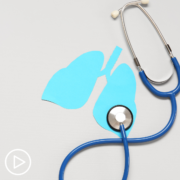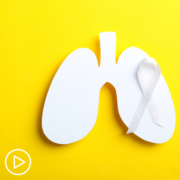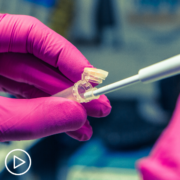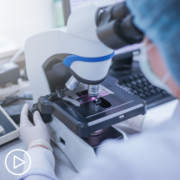When Should Lung Cancer Patients Receive Biomarker Testing?
When Should Lung Cancer Patients Receive Biomarker Testing? from Patient Empowerment Network on Vimeo.
Biomarker testing is vital for non-small cell lung cancer (NSCLC) patients, but when should it happen? Expert Dr. Joshua Sabari from NYU Langone discusses cancer cell mutations and ideal timing for biomarker testing for the best patient care.
Download Resource Guide | Descargar guía de recursos
See More from [ACT]IVATED NSCLC Biomarkers
Related Resources:
Transcript:
Lisa Hatfield:
And just from the patient perspective, does a patient need to be tested for these biomarkers throughout the course of their treatment, or is it done initially upon diagnosis or before second-line treatment?
Dr. Joshua Sabari:
Yeah, that’s a great question. You know, most mutations are clonal, meaning that they start in the original cancer cell and then the subsequent cells, daughter or son cells, also have that same mutation. So I would recommend doing next-generation sequencing up front in all patients. Now, some people have a specific mutation that we block with a targeted therapy. It could be pills. It could be an infusional targeted therapy. And that might change the sort of milieu or landscape of that mutational profile. So subsequently, after treatment, you may see acquired resistance or secondary mutations that will prevent the therapies from being effective. In those cases, I do recommend re-profiling.
So the most common example in lung cancer is the EGFR mutation, stands for epidermal growth factor receptor. We know that this mutation occurs in 20 to 25 percent of people diagnosed with non-small cell lung cancer. If you’re matched to a targeted therapy and don’t unfortunately have progression of disease, it may be very helpful to re-biopsy or re-sequence using both tissue and plasma to help us guide subsequent therapy. But if you do not have a targeted mutation and you’re treated with either chemotherapy and immunotherapy or immunotherapy alone, re-biopsy may not be as helpful in matching to further therapy.
Share Your Feedback
Create your own user feedback survey













